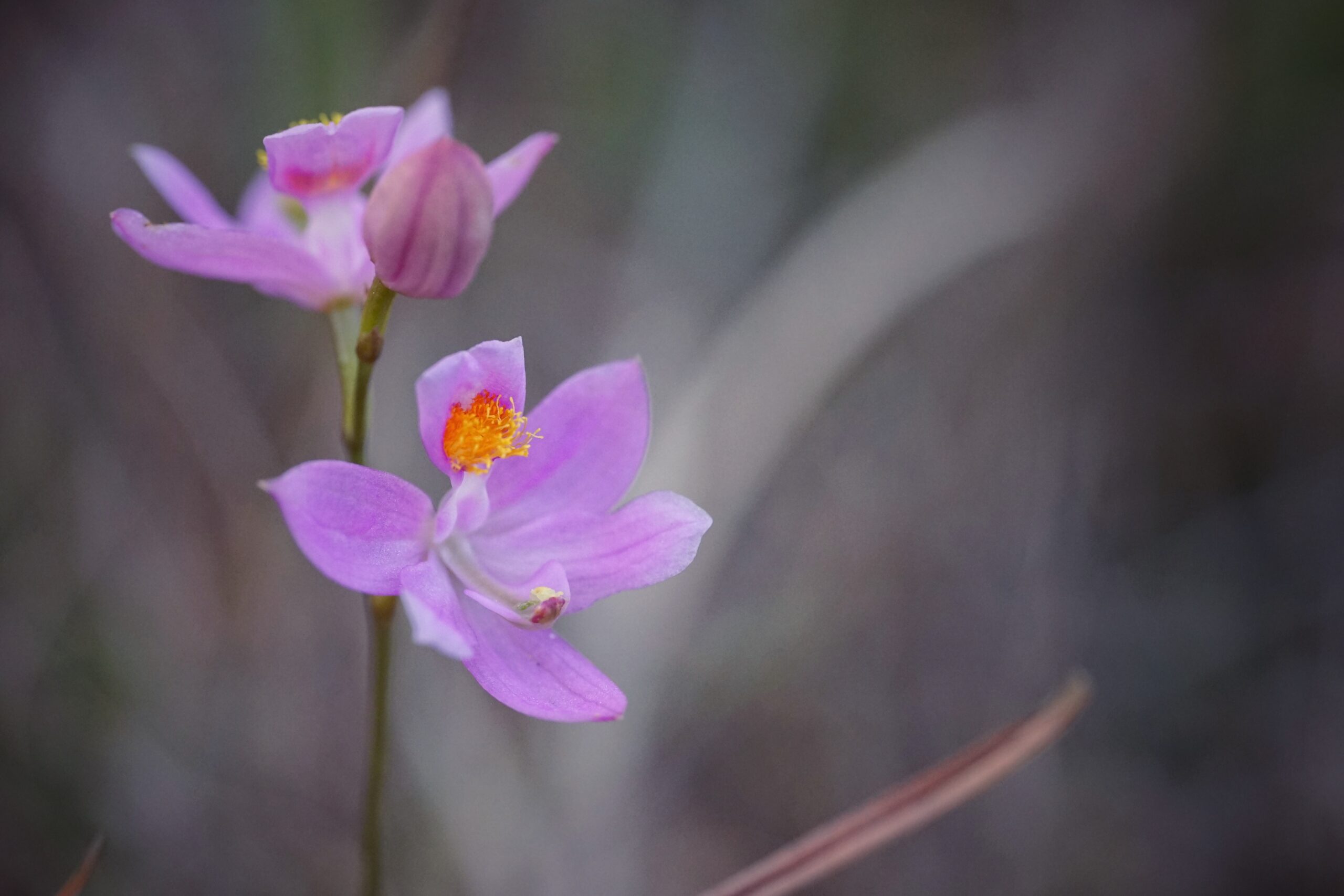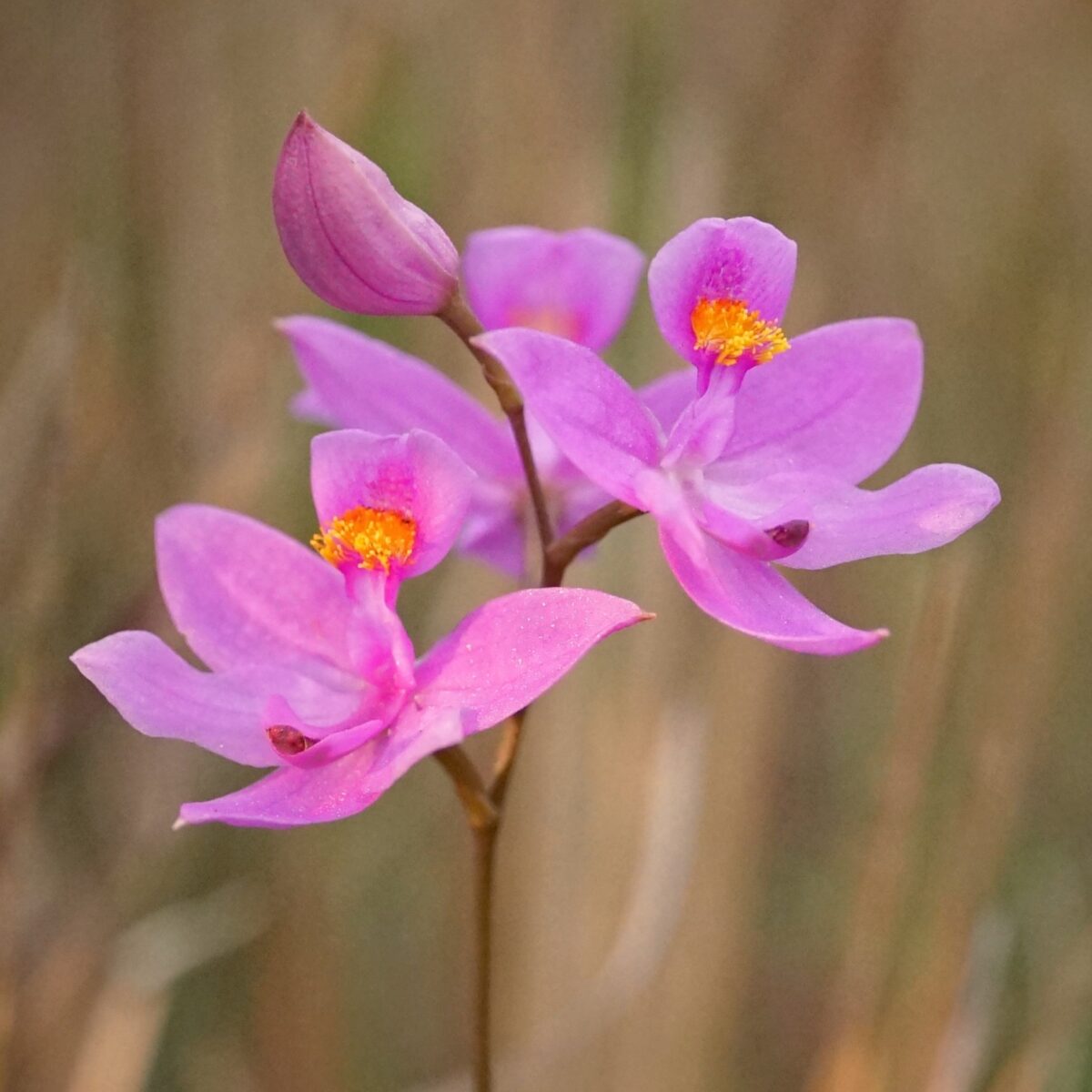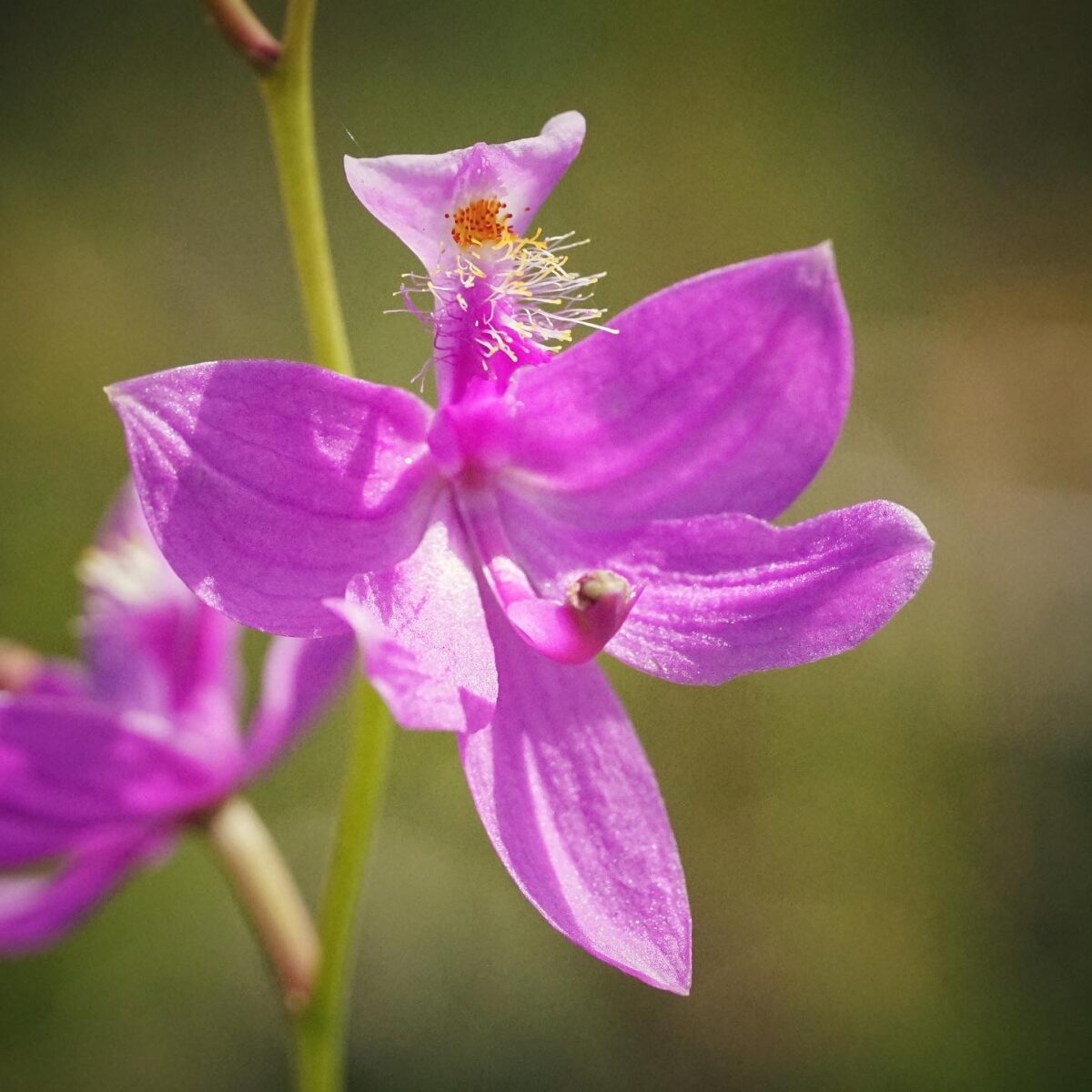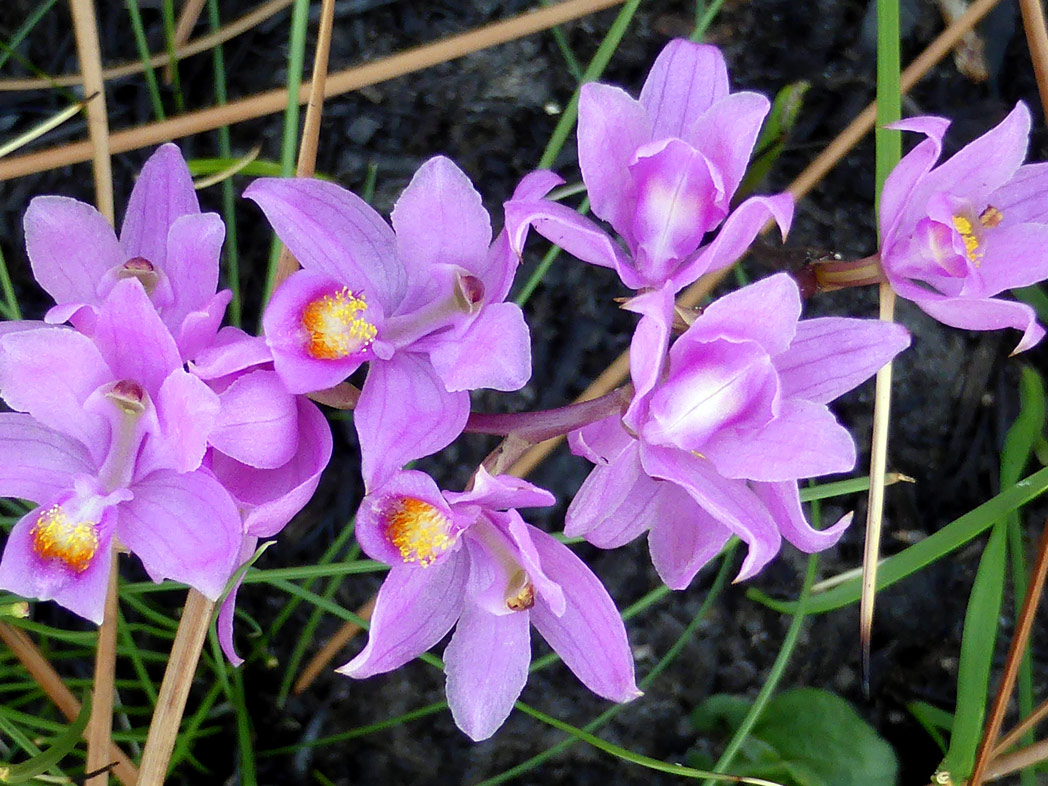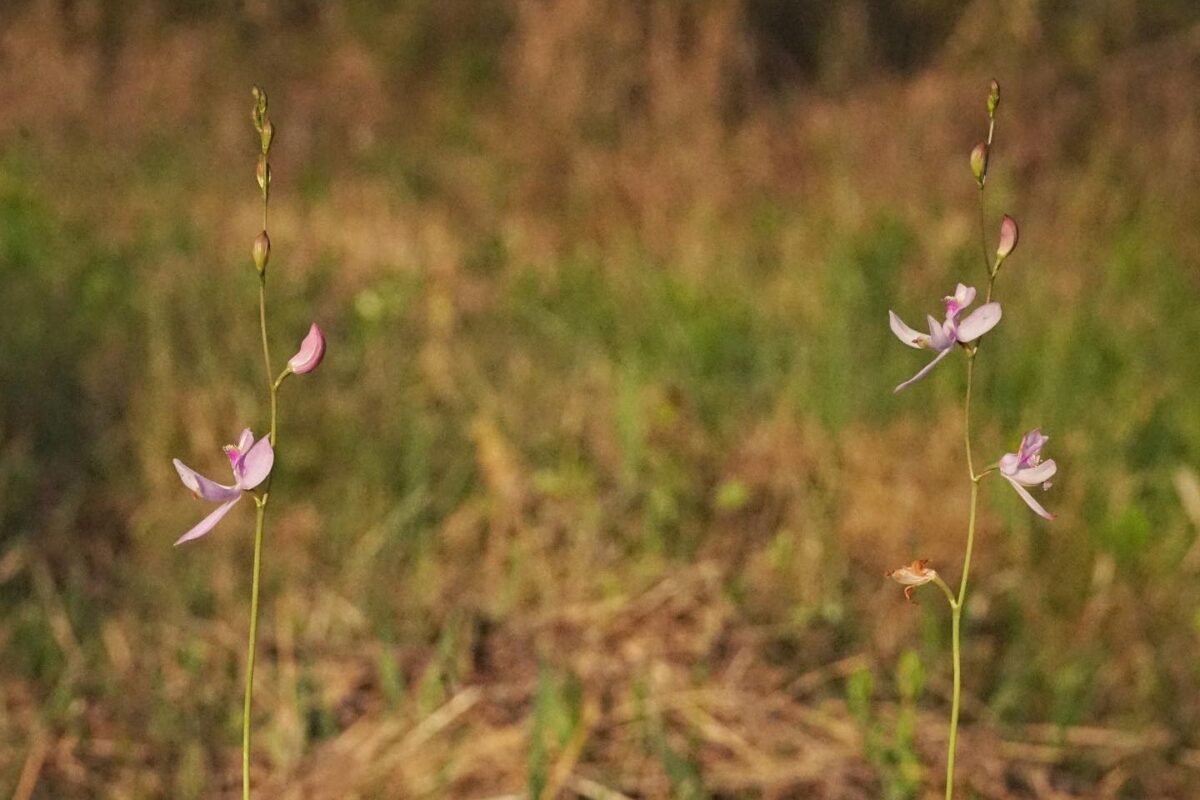Bearded grasspink
Pictured above: Bearded grasspink (Calopogon barbatus) by Emily Bell. Click on terms for botanical definitions. View post as a PDF.
Bearded grasspinks (Calopogon barbatus) are the earliest bloomers of Florida’s four Calopogon species, generally starting in January and February. They occur in bogs, wet flatwoods, prairies and roadsides along with Pale grasspinks (Calopogon pallidus) and Tuberous grasspinks (Calopogon tuberosus), but can be distinguished by their earlier bloom time, smaller flowers and the curvature of their lower lateral petals, which are violin shaped.
Bearded grasspink flowers form in a terminal inflorescence, with three to seven blooms. The petals can range from almost white to light pink to bright magenta. A labellum (liplike petal) occurs on the top of each flower (not the bottom where it occurs in most genera) and bears a tuft of yellow stamen-like bristles. Stems are leafless, with only one or two slender grass-like basal leaves. Seeds are born in capsules.
The pollination process of the Calopogon genus is unique. The stamen-like bristles that form on the lip are designed to attract pollinators, but they offer no nectar or pollen. Instead, when a bee lands on the hairs, the lip swings down and loosely traps the bee, forcing it to crawl out across the reproductive parts. Pollen is then deposited on the bee; if the bee is already carrying pollen, it will make contact with the flower’s stigma and (hopefully) pollinate the flower.
The genus name Calopogon is from the Greek kalos, or “beautiful,” and pogon, or “beard.” It refers to the tuft of hairlike structures on the flower’s lip.
Family: Orchidaceae (Orchid family)
Native range: North and Central Florida, with scattered populations into both West and South Florida
To see where natural populations of Bearded grasspink have been vouchered, visit florida.plantatlas.usf.edu.
Lifespan: Perennial
Soil: Acidic, sandy moist to wet soil
Exposure: Full sun to
Growth habit: up to 20 inches
Bearded grasspinks are not commercially available. Visit a natural area to see them.
Learn more about Bearded grasspinks from the Institute for Regional Conservation.
For more information on other Calopogon species, see these resources:

